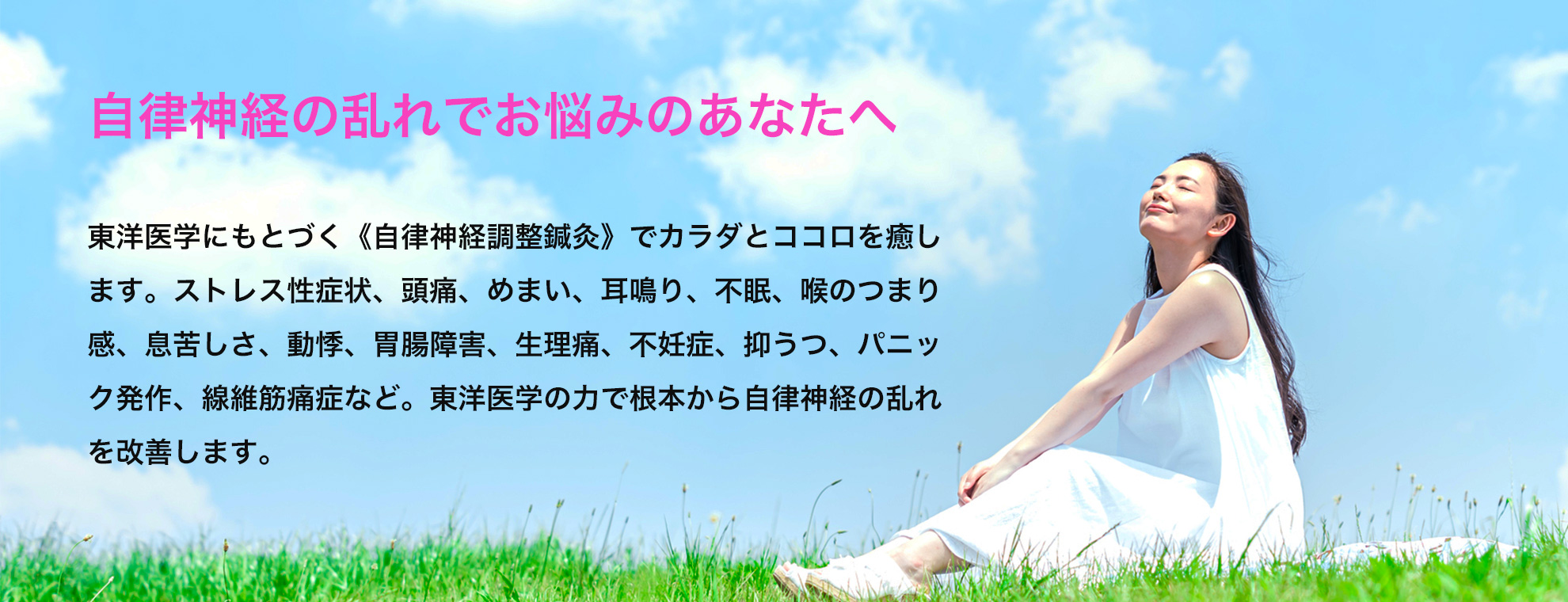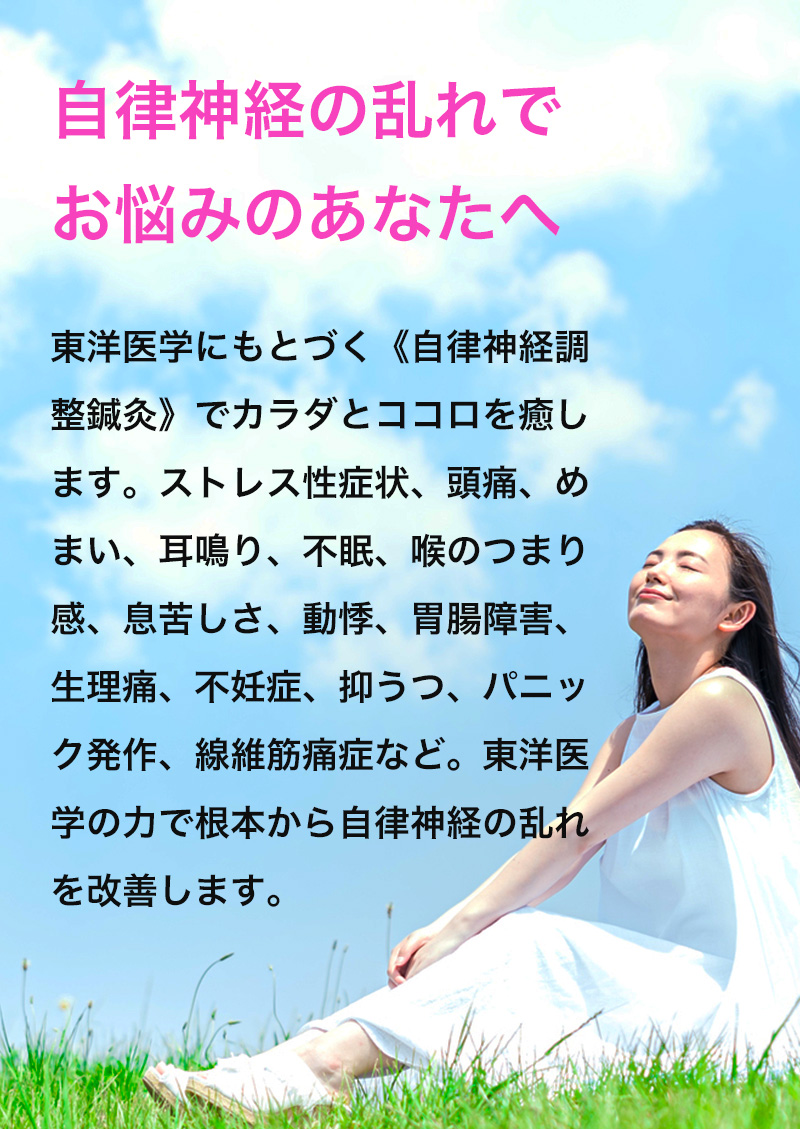稲森 英彦 Hidehiko INAMORI
プラナ松戸治療室代表
【略歴】
東京都生まれ。慶應義塾大学文学部卒。
1998年に鍼灸師資格を取得後、心療内科に勤務。
2005年に自律神経系・心療内科系鍼灸院のプラナ松戸治療室を開設。
現在(2024年)臨床歴26年。



自律神経、内臓、骨格を整える鍼灸治療です。
ストレス性疾患、過呼吸、動悸、吐き気、めまい、頭痛、喉のつまり感、抑うつ、不眠、慢性的な首・肩・腰の痛み、慢性疲労、原因不明の不妊症、目の疲れ・痛みなどに。

「ありのままの自分」を発見し、より楽に力を抜いて毎日を過ごすことができるためのサポートを致します。
詳細はコチラ
プラナ松戸治療室の症例集です。めまい、息苦しさ、動悸、離人症、頻尿、聴覚過敏、不妊症、首の痛みなど。
詳細はコチラご予約、ご相談、ご質問などはこちらのフォームをご利用下さい。
梅雨が明けて暑い夏がやってきました。夏は湿気と共に暑さ対策が欠かせません。
今回は夏の養生法、過ごし方をまとめます。
日本の夏は確実に暑くなってきています。東京の6月から9月の平均気温をみてみると、1901~1920年の20年分の平均値では26度を超えた日は1度もありませんでしたが、2001~2020年では26度を上回った日が4カ月間の半分を占めます。
また昨年2023年は暑い日が2001~2020年の平均値よりも多く、残暑も長引きました。最高気温では30度以上が5月17日から9月28日までに90回あり、1年間のおよそ4分の1が「真夏日」か「猛暑日」だったことになります(東京新聞)。
ここ100年で東京の夏は2.7度上昇し、1990年代後半以降は顕著に上昇しています(ウェザーニュース)。
このように日本の夏は確実に暑くなっているのです。
このように夏の気温が上昇してしまうと、昔言われていたような養生法は当てになりません。
「冷房を使ってはいけない」などがその代表ですが、東洋医学や自然療法が好きな方の中には、いまだにこのような養生法を信仰している方もいます。
しかし時代が変わり気象条件も変わっていくのですから、養生法もそれに合わせてアップデートする必要があります。
当然冷房は使うべきで、必要な水分を摂りながら過ごすことが大切です。一般的な熱中症対策を取るべきです。
もちろん冷やしすぎることはよくありませんが、その場合は足湯などで冷えを取りましょう。
夏は呼吸器に負担がかかります。体に汗腺のない犬は口でハアハアと呼吸(パンティング)をしながら体内の熱を調整していますが、外気に熱気と湿気が高い夏は呼吸器に大きく負担がかかります。
人間の場合は呼吸の他に、汗腺からの発汗で体温調整が可能です。しかし呼吸器が弱い体質の方は健康な方に比べて、体力を消耗してダルさや疲れを感じやすくなります。
また呼吸器と共に働く腎臓の弱い方、また心臓の弱い方も夏は厳しい季節です。食欲が低下してダルさを感じる、いわゆる夏バテを起こしやすくなります。
以下に夏の養生法をまとめます。
・冷房を使い適切な室温の中で過ごす。
・涼しい環境の中で体を動かし、汗を出して放熱する。
・汗はしっかり拭う。
・発汗した分の水分と塩分はこまめに補給する。
・冷たい飲食を控える。
・食べ過ぎない。
・日中の外出時は日傘、帽子、サングラスは必携。
・一日の終わりに湯船に浸かり発汗させる。
夏の養生法の要点は、熱気と湿気対策です。
涼しい環境で発汗させて熱を体内に籠らせないこと、
そして発汗した分の水分と塩分を摂ることが大切です。
体を動かすことに関しては、スーパーやショッピングモールなどの
管理された室温の中で、歩いたり階段を昇降するなどがいいでしょう。
梅雨同様、腎臓や呼吸器の弱い方、加えて心臓の弱い方は蒸し暑さに弱いです。
養生法を上手に取り入れながら夏を乗り切ってください。
鍼灸と漢方薬は、どちらも東洋医学の一部であり、健康を維持し病気を治療するために使用されますが、それぞれ異なる方法と原理に基づいています。
1. 方法:鍼灸は、鍼と灸を用いた治療法です。
鍼:細い針を体の特定の点(経穴やツボ)に刺すことで、エネルギー(気)の流れを調整し、痛みを軽減し、身体の自然な治癒力を促進します。
灸:ヨモギの葉を乾燥させたもの(艾)を燃やして、その熱を特定の経穴に当てることで、血行を促進し、体を温めて治療効果を高めます。
2. 原理:鍼灸は、身体のエネルギー(気)と血液の流れを調整することで、健康を維持し、病気を治療するという東洋医学の理論に基づいています。経絡と呼ばれるエネルギーの通り道を通じて、全身のバランスを整えます。
1. 方法:漢方薬は、植物、動物、鉱物などの自然素材を用いて調製された薬です。これらの薬は、個々の症状や体質に合わせて処方されます。
2. 原理:漢方薬は、体内のバランスを整えるために使用されます。特に、陰陽のバランス、五行(木、火、土、金、水)の調和を図ることが重要とされます。漢方薬は、身体全体の健康を改善し、病気の根本原因に対処することを目的としています。
1. 治療方法:鍼灸は物理的な刺激(鍼と灸)を用いるのに対し、漢方薬は内服薬(煎じ薬、錠剤、丸薬など)を用います。
2. 治療対象:鍼灸は特定の痛みや症状に対する即効性が期待されることが多く、漢方薬は慢性的な体質改善や全身のバランス調整に用いられることが多いです。
3. 治療の適用:鍼灸は、即効性のある痛みの緩和や急性の症状に対して有効であり、漢方薬は長期的な体質改善や慢性的な病気の治療に効果的です。
鍼灸と漢方薬は、どちらも東洋医学の一部であり、相互に補完し合うことができるため、多くの治療において併用されることがあります。
鍼灸で気の滞りを除き、エネルギーが体の隅々まで巡ることで、漢方薬の薬効が必要な臓器にスムーズに届くようになります。
その結果、漢方薬の効果が上がることも珍しくありません。また漢方薬の薬効により鍼灸の効果も高まります。
このように鍼灸と漢方薬は補完的であり、車の両輪のような関係なのです。
心療内科と精神科の違いがわからない方も少なくないでしょう。
今回はその違いについてまとめます。
まず心療内科は、心理的な要因が関与して身体症状が現れる「心身症」を主に扱います。
つまり、ストレスなどの精神的要因が身体症状を引き起こす疾患に対して治療を行います。
精神的なストレスによって頭痛、めまい、耳鳴り、動悸、息苦しさ、胃痛、吐き気、便秘などを経験された方もおられるでしょう。
そのような病態を心身症といい、その場合は心療内科が適しています。
一方、精神科は統合失調症やうつ病、不安障害などの、心の病気そのものを対象とします。
つまり、精神症状が中心の患者さんに対して、専門的な薬物療法や精神療法を行います。
心療内科を標榜している科の医師が精神科医というケースも多く、心療内科でもうつ病や不安障害などの精神科の症状を診ることが少なくありません。
しかし原則論としては心療内科はストレスによる体の症状、精神科は心の症状に特に重点を置いて診療を行います。
以上が心療内科と精神科の違いになります。
ちなみに当治療室は「鍼灸院」ですが、心療内科疾患、つまり精神的ストレスによって体に症状が出る心身症を「鍼」と「灸」で治療しています。
東洋医学による心身症の治療に興味のある方は、お気軽にご相談ください。